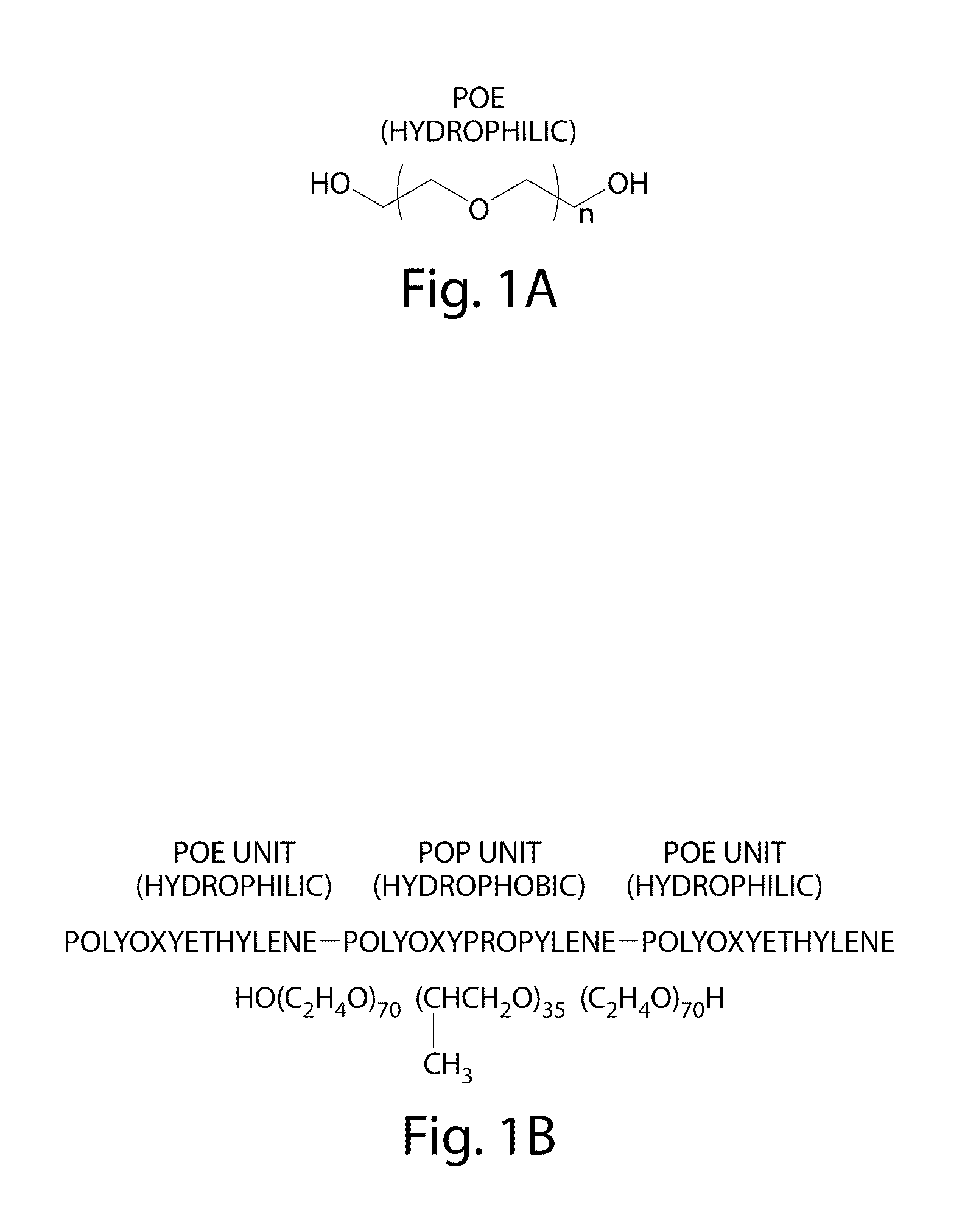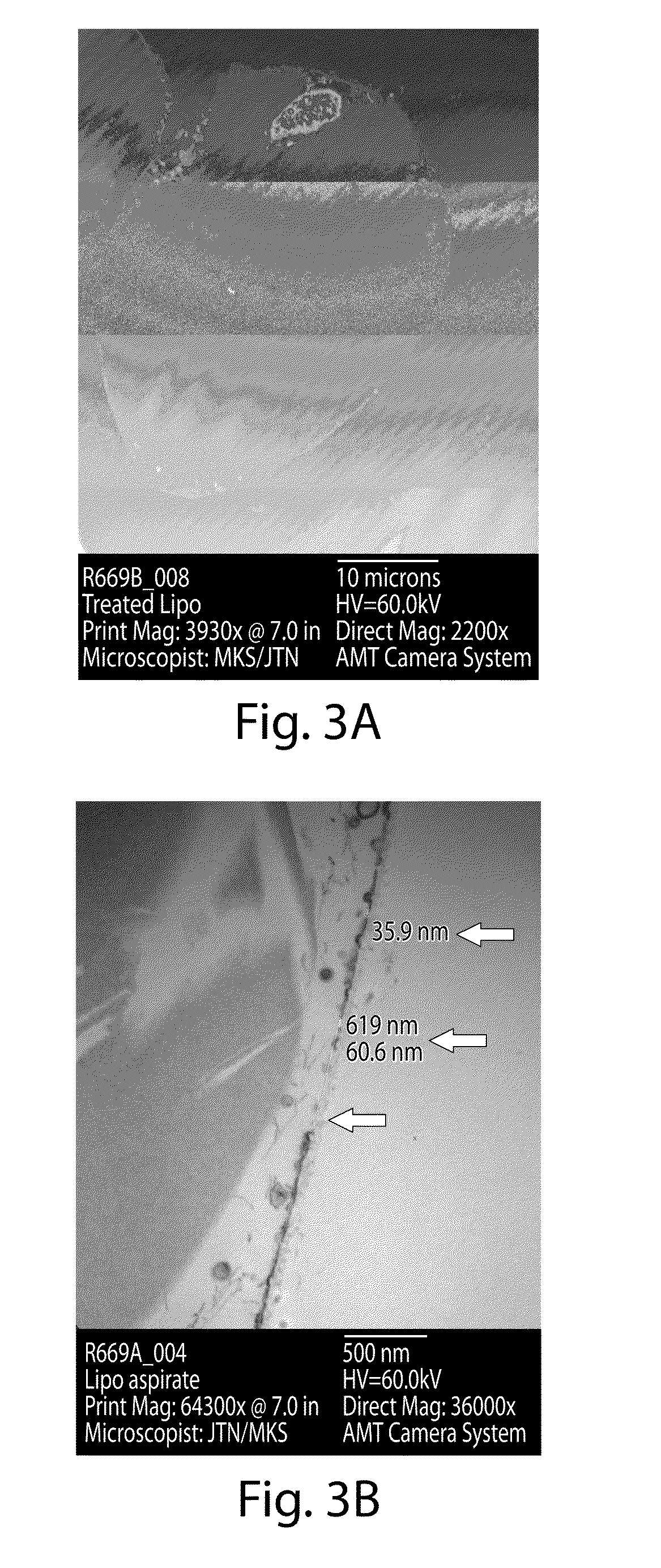Cell transplantation
a cell transplantation and cell technology, applied in the field of cell transplantation, can solve the problems of not protecting cells from damage or lysing cells, reducing the viscosity of the membrane, etc., and achieve the effects of preventing cell damage, preventing cell damage, and preventing cell damag
- Summary
- Abstract
- Description
- Claims
- Application Information
AI Technical Summary
Benefits of technology
Problems solved by technology
Method used
Image
Examples
example 1
Enhanced Fat Protection and Survival in Fat Transplantation via Treatment with Poloxamer P188
[0078]Introduction. Autologous fat transplantation is an essential tool in soft tissue reconstruction. Damaged and apoptotic cells, however, are eventually resorbed by the body and provide inconsistent and undesirable results for soft tissue restoration. Poloxamer P188 is an agent that interacts with damaged cell membranes and inserts itself into lipid monolayers. This non-ionic surfactant effectively seals the membrane of damaged cells and has been shown to protect against injury and apoptosis. The ability of poloxamers to interact with lipid membranes has led us to hypothesize that by sealing portions of fat cells damaged during fat harvesting, we can restore and protect the structural integrity of damaged cells and thus improve cell survival. This Example investigates the ability of P188 to effectively restore and protect damaged tissues, improve cell survival, and improve transplantation...
example 2
Comparison of P188 with Other Agents for Fat Transplantation
Introduction
[0082]Soft tissue injuries and malformations secondary to trauma, congenital defects, infections, and oncologic resections are a source of significant morbidity in patients. At present autologous free flap reconstruction or local advancement flaps are the workhorses of reconstructive modalities for significant soft tissue and bony defects. While, pedicled flaps and free flap reconstructions offer powerful tools for reconstruction, they are not without potentially serious side effects and donor site morbidity. The ability to transfer a large volume of autologous adipose tissue for the reconstruction of these defects would provide a novel reconstructive option for potentially millions of patients, without the associated donor site morbidities. Additionally, it would provide a powerful tool for patients who have poor donor site options, and patients with the inability to tolerate the extended operating times requir...
PUM
| Property | Measurement | Unit |
|---|---|---|
| w/w | aaaaa | aaaaa |
| volume | aaaaa | aaaaa |
| concentration | aaaaa | aaaaa |
Abstract
Description
Claims
Application Information
 Login to View More
Login to View More - R&D
- Intellectual Property
- Life Sciences
- Materials
- Tech Scout
- Unparalleled Data Quality
- Higher Quality Content
- 60% Fewer Hallucinations
Browse by: Latest US Patents, China's latest patents, Technical Efficacy Thesaurus, Application Domain, Technology Topic, Popular Technical Reports.
© 2025 PatSnap. All rights reserved.Legal|Privacy policy|Modern Slavery Act Transparency Statement|Sitemap|About US| Contact US: help@patsnap.com



